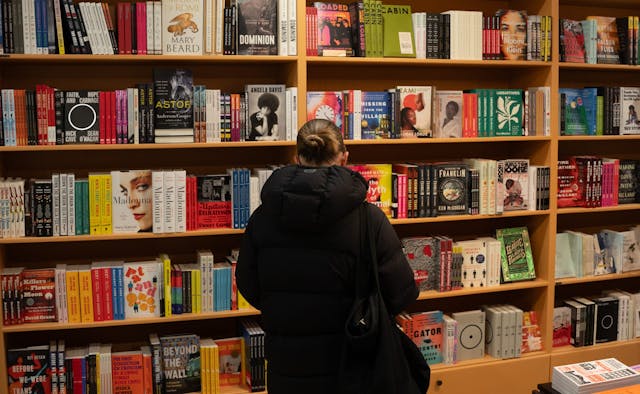As much as diners who eat local are all for supporting local, the survival of restaurants doesn’t entirely come down to them.
Restaurants are small businesses notorious for their razor-thin margins, and the financial puzzle behind what makes or breaks a month isn’t just who walks in—it’s also how well chefs can manage their side of the kitchen, too.
It should go without saying that inventory forms a foundational part of a restaurant’s bottom line, but it’s not always so apparent. Far from being one of the sexier topics of conversation when it comes to restaurants, it's critical that every teaspoon of salt and sugar, every drop of oil, and scrap of vegetables and fish and meat—especially if you cook up menus according to seasons, like many Montreal restaurants—is accounted for.
That's because every bite of food taken holds with it a restaurant’s utility bills, labour costs, food costs, anything related to transportation that goes through or comes out of their front door—and inventory’s a huge part of that.
So what're you going to hear when you go behind the line and into the walk-ins of three Montreal restaurants to find out just how important inventory management is to their chefs, how they look at the backend of the business, and what they do to make sure they're making the most of what they've got?

Either it all matters, or nothing matters.
INVENTORY IS EDUCATION
“The walk-in’s the CPU. It’s where all the information begins: Stations can’t be organized if this fridge isn’t organized. Everything that leaves here and goes into a section needs to kept track of,” says Louie Deligianis of Bistro la Franquette.
“You make your bed, you clean your room—it’s the same here, if it’s organized, you’re organized.
Doing inventory and rotating the freezers every month, for the chef, inventory management's not only crucial, but a teachable moment for another generation of cooks that are in his kitchen—oftentimes giving lessons on things that may very well not even be taught in culinary schools.
“You want to create a space that’s all-encompassing, teaching a business that almost anyone can get into—have they ever done food costs? Do they know what a yield test is?”
It's been said that it's impolite to talk about money, but in the current economic climes restaurants are facing right now, they won't shy away from the topic when asked about it.
“Those small financial steps, on every level of cooking, can get overlooked," Louis says. "Things are so go, go, go, but you need to do proper portioning, proper food costs, and proper math."

"The prices are fluctuating so much these days, so trying to teach someone food costs is important. Think about McDonald’s; if they put one less onion per burger, that’s $10 million for them. Here, I’m applying that to a small business, teaching that $1 a day adds up, instilling that every time you move your knife, every time you open something? That’s money."
"Everything has value. If you put a steak and an onion next to one another, what’s more valuable? You’ll think the steak, right? The answer’s that they’re the same, in so far as a chef’s got to put just as much work into the onion as they do the steak. If you can manage to do that, then everything has value. It all adds up."
"Either it all matters, or nothing matters."
By the time it's time to open for service, Louis and his team's done everything they could, and while customers may not always fulfill their part of the bargain with cancellations and no-shows, there are services like DINR to help avoid wasted food—a sentiment echoed by other chefs.

FILLING THE GAP
Le Filet in the Plateau deals in a lot of fish and seafood, and with roughly 350 clients to feed a week, they’re dealing awhile fragile cargo week in and week out.
“Inventory management is important because it’s cost management, almost as important as labour costs,” says Le Filet’s chef Yasu Okazaki. “I look at the reservation book, I even look at the weather, and I need to predict what we’re going to sell that night.
“I have an expectation of how many clients I get a day, and I order based on that, but if I order on a Wednesday for the weekend, it won’t easily carry over to the next week. It can be stressful.”
Things can be chaotic and confusing for a restaurant, but here, I think we’ve really built something efficient.
However, through a combination of reservation platforms like DINR and consistent, careful management of product? Okazaki says Le Filet thankfully doesn’t have to deal with a lot of no-shows, avoiding food waste and feeding people well.
“My walk-in’s really just storage space to me, but what’s important is that I understand exactly what’s in there. If I waste something or forget something, I feel awful. It’s important for cooks—every cook should know their portions they have for a dish."
“Things can be chaotic and confusing for a restaurant, but here, I think we’ve really built something efficient.”

LASTING LESSONS
“My walk-in’s my workshop," says Foxy's chef Catherine Couvet Desrosiers.
"When you have your menu, you know what you need to use, but here? If we don’t use something, we try to ferment it, pickle it, dry it—it becomes a playground to try new things. Nothing goes to waste, and everything gets spun into a new dish, a special, or even just a snack.”
For Catherine, with good inventory comes good standardization, and better cost management: "These are small details that we don’t talk about because it’s super boring, but inventory management’s 50% of our job. Even at culinary school, I find they don’t manage on inventory management. You need to have what’s necessary, and if you don’t need it, you shouldn’t have it.”
Having worked at the restaurant since July 2020, she's experienced everything from reopening and closing dining rooms, developing takeout menus, and going full tilt post-pandemic. Working in the day to day, she's been a part of the restaurant's logistics and administrative work—all key lessons she'll take with her when she opens up a restaurant of her own.

It might seem simple, she says, but inventory's proven to be a delicate balance that she had to learn on the go—especially when considering everything that can go wrong with your best-laid plans.
"If I buy too much but it doesn’t add up at the end of the month, the business won’t make as much. I think inventory is really core to the operation,” Catherine says.
“My first year at Foxy was intense, learning when vegetables were coming as I worked closely with farmers. At the beginning and end of the season, we'd have a meeting to know which vegetables could be coming, but even as we tried plan ahead, even then, things can change: Temperatures can change, there can be too much rain—you have to be flexible when planning a menu.”
So what could she rely on to make sure every seasonal ingredient and increasingly costly pantry staple is being put to good use?
“Cooks work closely with the front-of-house—making sure there’s a good ambiance, talking with customers—and now that we have DINR? We’ve had issues with no-shows and last-minute cancellations, but it helps us fill that gap.”
“Most of the time, if we put up available tables in the morning, 80% or 90% of the time it’s already booked by dinner.”
This article was brought to you by DINR. For same-day reservations at some of Montreal's most exclusive restaurants, download the app and reserve today.













